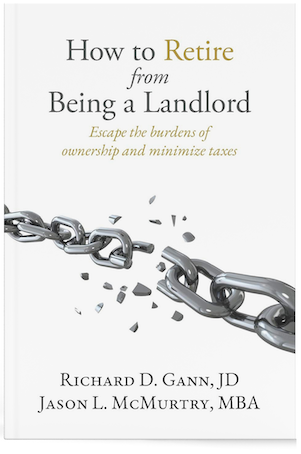
Landlords Help Drive the U.S. Economy
Landlords Help Drive the U.S. Economy
The term “landlord” comes from the British feudal system, when “lords of the manor” owned large estates occupied by farmers and villagers. Most land was concentrated in the hands of nobility. Owning one’s home was out of reach for most people; becoming a landlord was out of the question. In modern America, however, most landlords are hard-working, middle-class Americans who saved and invested in small rental properties to provide a reliable income for their retirement. Indeed, at least two-thirds of all U.S. rental properties are owned by individual landlords.[i]
Ownership of rental housing by individual Americans is critical to the U.S. economy. Without investment and management by families, housing would be the exclusive purview of large corporations or worse—the government. If large corporations had the burden of owning most rental housing, too much capital would be tied up in real estate, creating a drag on the economy. Mom-and-pop landlords therefore serve a vital function of maximizing the circulation of corporate investment capital while preserving family net worth in the form of lower-yielding, lower-risk rental properties.
After two centuries, it is easy to take the American system for granted. Yet one need only glance at a globe to find countries whose property ownership resembles the feudal system of medieval Europe. Comparing the U.S. to these regimes helps us draw some important conclusions:
- Democratized housing ownership ensures an active and liquid real estate market
- Decentralized and transferable title optimizes the highest and best use of property
- Rental property ownership offers a path to financial independence not attainable in many parts of the world
- Healthy real estate markets create myriad jobs and contribute to a robust national economy
Despite these benefits, leaders in Washington DC and the West Coast states seek to dismantle the framework of real estate ownership and taxation in this country. Painting all landlords with the same broad brush, these zealots would prefer to see the government control all rental housing. Owners no longer would be able to exchange their rental properties without devastating taxes. Heirs would be forced to liquidate family properties to fund wealth-distribution taxes. And all landlords would be subject to regulations and liabilities that ultimately defeat the benefits of continued ownership.
If this image seems apocryphal, look at what is happening in Sacramento or Portland. Landlords are under siege. Businesses are being taxed into oblivion. People are voting with their feet. And if things continue at this rate, there won’t be enough taxpayers left to supply fodder for the public trough.
What can a landlord do? As it turns out, many rental housing owners are simply relocating their equity for greener pastures. This includes states like Texas, Arizona and Florida—where people and jobs are flocking, not fleeing. Evidently lower taxes, business-friendly regulations and warm weather are a recipe for demographic and economic success. We believe these factors also support the potential for successful rental-property ownership.
For more information about passive real estate investments, please call 1031 Capital Solutions at 1-800-445-5908 or visit our website, 1031capitalsolutions.com.
_____________________
This article is neither an offer to sell nor a solicitation of an offer to buy any security, which can only be made by prospectus. Investing in real estate and 1031 exchange replacement properties may not be suitable for all investors and may involve significant risks such as illiquidity, tenant vacancies, general market conditions and competition, lack of operating history, interest rate risks, the risk of new supply coming to market and softening rental rates, general risks of owning/operating commercial and multifamily properties, short term leases associated with multi-family properties, financing risks, potential adverse tax consequences, general economic risks, development risks, long hold periods, and potential loss of the entire investment principal.
Neither Richard D. Gann nor CIS or CAM provide tax or legal advice, as such advice can only be provided by a qualified tax or legal professional, who all investors should consult prior to making any investment decision.
Securities offered through Concorde Investment Services, LLC (CIS), member FINRA/SIPC. Advisory services offered through Concorde Asset Management, LLC (CAM), an SEC-registered investment adviser. 1031 Capital Solutions is independent of CIS and CAM.
[i] According to a 2015 report from the U.S. Census Bureau (https://www.census.gov/newsroom/press-releases/2017/rental-housing.html), individual investors own 74.4% of all rental housing properties. 14.8% are owned by LPs, LLPs and LLCs, and trusts/estates own another 4.1%. On a per-unit basis, rather than a per-property basis, individuals own 47.8% of rental housing, followed by LPs/LLPs/LLCs (33.2%) and trusts/estates (3.3%). In this book, we refer to “individual landlords” to include single people, couples and families, who often create an LP or LLC to take title to their property. Assuming half of the LPs/LLPs/LLCs indicated by the Bureau fall into this group, and including trusts/estates in our definition of individual landlords (as opposed to corporations, REITs, or other institutional owners), then individual investors own 85.9% of all rental-housing properties and 67.7% of all rental housing units.
continue reading
Related Posts
Changes are Happening Quickly – Don’t be Left Behind […]
White House Seeks Higher Taxes from Landlords In a significant […]










